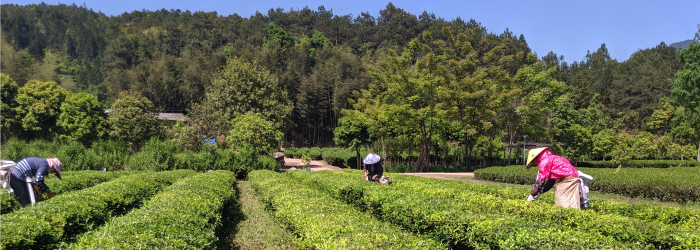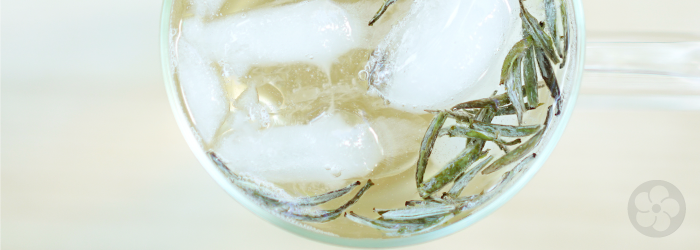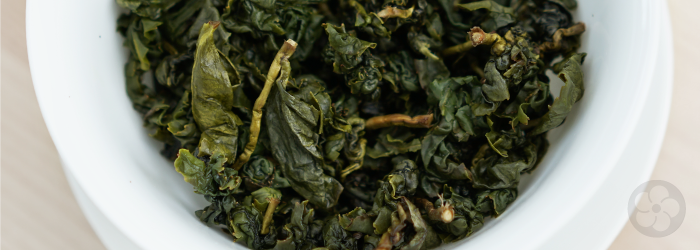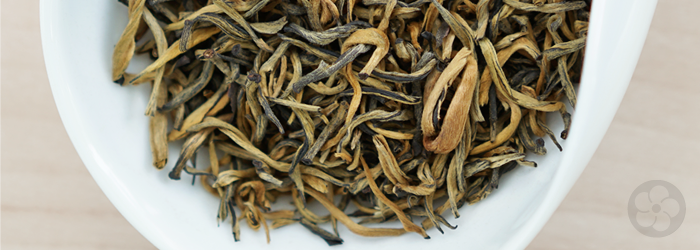Understanding Tea Identity: 4 Teas Defined by Harvest Date

We often discuss the four factors through which each natural tea develops its distinct flavor identity. Variety, harvest date, provenance and craftsmanship all play a role in building the finished characteristics of a tea. However, the weight of these factors in defining quality and flavor can vary from category to category, or even from tea to tea.
To get a clear picture of the impact, it can help to taste a few teas that depend heavily on a single aspect. Today, we’re showcasing the importance of harvest date with four teas that just wouldn’t taste the same if they were harvested at any other time.
Learn more about why harvest date is important >>
1. Our Finest Dragonwell
As the rarest tea in our collection, this tea often raises eyebrows. But what makes it so unique? Each year, we source more than one Dragonwell green tea from the traditional regions of Zhejiang - why does this one stand out from the rest?
The answer, of course, is harvest date. This tea is made up of only the first-picked leaves of every year’s harvest: tiny, tender leaf buds, carefully plucked and gently roasted to preserve the most delicate of natural flavors. Because these are the first leaves to appear after winter dormancy, they emerge slowly, powered by carbohydrates stored in the roots rather than through photosynthesis performed in the leaves. This gives them a natural sweetness and buttery texture that won’t be replicated until next spring.
Find out more about the impact of harvest date on green tea quality >>
Of course, the limited season in which these small leaves can be picked also limits the quantity available each year, and their highly prized flavor carries a price to match. For connoisseurs, though, there’s no match for the quality of an early spring harvest.
Watch Alice brew Our Finest Dragonwell in this video:
2. Silver Needle
The minimal processing of white tea also allows the natural character of early harvests to shine. While other factors like variety and provenance are also major players in the overall quality of any white tea, the name ‘Silver Needle’ is generally applied across the board to all early spring white tea harvests.
This is because the harvest date shapes the physical characteristics for which this tea is named: only the youngest buds of the tea plant are closed into small ‘needles’, and covered with downy white trichomes that lend a silver color to the leaves. Preserved by the unique processing steps of traditional ‘fading’, this fine coating even gives the whole category its name.
Learn more about the traditional crafting technique called fading >>
Unlike green tea, white tea production was historically localized to a small region, and while the range has now spread, crafting methods are slow to diversify. Within the context of traditionally crafted white teas, there are three main styles. Each is defined by harvest date, with Silver Needle consisting of the earliest harvests, followed by Bai Mu Dan, and then Shou Mei as spring turns to summer. Despite the relative availability of the two later harvests, Silver Needle remains the best known, even giving rise to the myth that all white teas consist only of young leaf buds!
3. Jin Xuan, Winter Sprout
While the rest of the teas on this list are defined by their early spring harvest date, this unusual pick is plucked in the middle of winter. In the midst of the typically dormant cold months, sub-tropical Taiwan occasionally experiences short periods of relatively warm weather that can ‘fool’ tea plants into sending forth new leaf buds.
Find out how tea flavor develops during the growth process >>
Because these leaves experience the same slow, difficult growth period as early spring buds, they develop similar natural sweetness. Without spring rains, though, carbohydrate content is less diluted, allowing for a more intense concentration of flavor. Combined with the limited sun exposure that gives all high mountain Taiwanese oolongs their distinct creamy mouth feel, this tea truly stands out.
Learn why elevation is key to naturally creamy textures in this video:
4. Gold Thread Reserve
Harvest dates are typically more important for quality in the world of lightly oxidized teas, but a few black teas are also defined by their early harvest dates. Like Silver Needle, this classic example of Chinese black tea (also called ‘red tea’) is named for the unique appearance of the spring leaves. Rather than the deep black color that mature leaves take on when they are oxidized, these young buds turn a distinctive golden hue.
Find out how oxidation changes tea flavor in black teas >>
Along with the unique color, the early harvest date of Gold Thread Reserve also gives it a characteristic malty texture, again thanks to the prevalence of carbohydrates in the leaf buds. Unlike later harvest black teas, which are sometimes preferred for their bold, crisp flavor, this tea delivers depth and richness without a hint of astringency.
The worldwide spread of black tea has given rise to myriad styles and flavor profiles within this category, but the natural molasses-like sweetness and smooth finish of this carefully plucked tea make it instantly recognizable. Even when it is called by alternative names like Yunnan Gold or Golden Needle, it is always defined by the selection of young leaf buds.
All four of these teas are made exceptional in large part because of their harvest date. Try a comparison tasting with another tea in the same category to fully appreciate the difference a few weeks or months can make! Taking the time to pay attention to each aspect of tea identity will help the palate learn to distinguish the key features of natural flavor.
When are your favorite teas harvested, and what do the dates contribute to the finished brew? Let us know what you think in the comments below!
Sign up for our newsletter to get blog updates in your inbox!








Comments on this post (0)